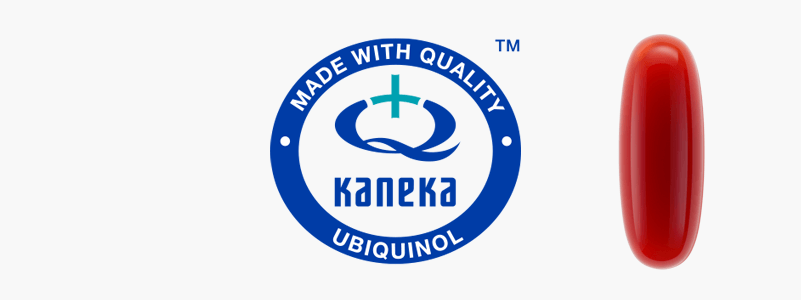Our bodies are made up of intricate systems that work together to keep us alive and functioning. As part of a proactive approach to wellness, many people turn to vitamins and supplements to help support their nutritional needs, especially when aiming to fill dietary gaps or target specific health goals.
However, with so many choices and unfamiliar terms, it's easy to feel overwhelmed. One term that often appears on supplement labels, especially those related to omega-3s, is EPA. But what exactly does EPA stand for, and why does it matter in the context of nutrition and overall health?
In this article, we'll explore what EPA is (and what it isn't), how it contributes to key areas of health, and where to find it, helping you make informed choices when it comes to supporting your wellbeing.
What EPA Is and Its Role in the Body
EPA stands for eicosapentaenoic acid, a long-chain omega-3 fatty acid that plays a key role in various physiological processes. Alongside DHA (docosahexaenoic acid) and ALA (alpha-linolenic acid), EPA is one of the three main types of omega-3s. It is found primarily in marine sources such as cold-water fish and certain types of algae.
In the body, EPA plays a role as a structural component of cell membranes and contributes to the production of eicosanoids, signaling molecules involved in the body's natural inflammatory response and other cellular processes. These mechanisms are part of how EPA supports normal physiological function.
While research is ongoing, EPA is being studied for its potential to support areas such as cardiovascular health, cognitive wellbeing, and general wellness when consumed as part of a balanced diet and healthy lifestyle.
The Importance of Omega-3 Fatty Acids in Nutrition
You may have heard of omega-3 fatty acids being referred to as “essential” fats. This means that the body cannot produce them on its own, and that they must be obtained through one's diet. Essential fats are crucial for maintaining the structure and function of every cell in the body, making it vital that you get sufficient amounts of these fats in your diet or through supplements.
Of the three main omega-3s, EPA and DHA are found primarily in marine sources such as fish and algae, and are more readily utilized by the body. ALA (alpha-linolenic acid), by contrast, is found in plant-based sources like flaxseeds, chia seeds, and walnuts. While the body can convert ALA into EPA and DHA, this process is relatively inefficient, highlighting the importance of obtaining EPA directly through food or supplementation for those who wish to ensure adequate intake.
Signs You May Not Be Getting Enough EPA
While there are no definitive symptoms that point specifically to low EPA intake, certain dietary patterns may increase the likelihood of insufficient levels. People who eat little to no seafood may have lower EPA levels. The same goes for those following strict vegetarian or vegan diets, or those who consume highly processed foods.
Emerging research suggests that inadequate intake of omega-3s, including EPA, may be associated with imbalances in the body's natural inflammatory response and less-than-optimal support for cardiovascular health. However, these associations are still being studied, and many factors can influence how omega-3s function in the body. Note that individual needs vary, and any concern about fatty acid intake should be discussed with a qualified health professional.
Dietary Sources of EPA
EPA is naturally found in cold-water fatty fish, such as salmon, mackerel, sardines, herring, and anchovies. Oysters and mussels also contain EPA, albeit in smaller amounts. Depending on the species, origin (e.g., wild-caught vs. farmed), and preparation method, the exact EPA content can vary.
For those on plant-based diets, algae-based supplements offer a marine-sourced alternative, as certain types of algae naturally produce EPA. Hence, individuals seeking to avoid animal-derived products might consider algal oil as a valuable option for obtaining long-chain omega-3s.
EPA in Supplements: What to Know
EPA is widely available in over-the-counter omega-3 supplements, often in combination with DHA. These supplements are typically derived from fish oil, krill oil, and algal oil (as a vegan option).
You can easily find the amount of EPA per serving on supplement labels to understand how much you're consuming per serving. Some products may also emphasize a higher EPA-to-DHA ratio, depending on their intended use.
Additionally, it's helpful to look for supplements that specify the source of their ingredients as well as their manufacturing process. The labels of Xtendlife's omega-3 supplements, for example, might show you that they contain Hoki Oil sourced from the Southern Ocean of New Zealand and Tuna Oil “produced by enzymatic hydrolysis and molecular distillation.” Knowing that your supplement was sourced in a sustainable manner, and then processed using advanced, science-backed techniques in an FDA-registered and GMP-certified facility, gives you confidence that you're getting a quality product from a company that values purity, efficacy, and safety.
As always, keep in mind that these products are intended to complement, not replace, a balanced diet. Aim for healthy eating habits first and add supplements as needed.
How EPA Differs from DHA and ALA
While all omega-3 fatty acids are important, EPA, DHA, and ALA each serve different roles in the body.
EPA (eicosapentaenoic acid) is known for its involvement in supporting the body's natural inflammatory response and contributing to cardiovascular wellness. It's found primarily in marine sources and is more directly available to the body than plant-based omega-3s.DHA (docosahexaenoic acid), by contrast, is more concentrated in the brain and retina, where it plays a structural role in supporting cognitive function and visual development, especially during early life stages.
ALA (alpha-linolenic acid) is the plant-based omega-3 found in foods like flaxseeds, chia seeds, and walnuts. While the body can convert ALA into EPA and DHA, this conversion is limited, making direct dietary sources of EPA and DHA especially important for those looking to optimize their omega-3 intake.
Understanding how these omega-3s differ can help individuals make more informed choices based on their personal dietary needs and wellness goals.
Current Research and Considerations
EPA has been the subject of numerous clinical studies examining its role in heart health, mood, and inflammatory response. While findings vary and continue to evolve, EPA is considered a clinically studied ingredient for its potential to support overall wellness when consumed at appropriate levels.
Some studies suggest that higher intakes of EPA may help reduce the risk of cardiovascular disease or support treatment for mental health conditions as part of a balanced lifestyle. However, it's important to view these findings as supportive, not conclusive, and always in the context of overall dietary habits.
Choosing whether to increase EPA intake through diet or supplements depends on individual patterns and wellness goals. And more importantly, understanding what labels mean and consulting a healthcare provider can help you make confident decisions if you're considering supplementation.
Putting EPA in Perspective
Understanding what EPA is and how it functions in the body is an important step toward making informed, intentional choices about your health. Whether through food or supplementation, EPA can play a meaningful role in supporting the body's natural processes, particularly those linked to cardiovascular wellness and inflammatory balance.
By learning how different types of omega-3s work and identifying what best supports your individual needs, you can take a more confident, proactive approach to nutrition, one that's grounded in knowledge and aligned with your long-term wellbeing.


 Supplements
Supplements Bundles
Bundles





















